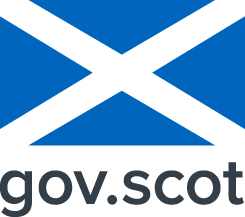Map of soil leaching potential (partial cover)
The map shows the risk of potential pollutants and nutrients leaching through the soil to ground and surface waters. This map primarily covers the cultivated land in Scotland. The soil leaching potential gives information on the likelihood of a potential pollutant that is applied to the soil surface infiltrating the soil and leaching to a water course or ground water in three main categories (High, Intermediate and Low) with the High class being subdivided into 3 classes while the intermediate class is subdivided into 2 classes. Note: soils over current and restored mineral workings and in urban areas that are often disturbed or absent are assumed to have little ability to retain potential pollutants and so are classified as having a high leaching potential (see Lewis, M.A., Lilly, A and J.S. Bell. 2000. Groundwater vulnerability mapping in Scotland: Modifications to classification used in England and Wales. In: Groundwater in the Celtic Regions: Studies in Hard Rock and Quaternary Hydrogeology. Eds. N.S. Robins and B.D.R. Misstear Geological Society Special Publication No. 182. pp 71-79.).
Default
- Date ()
- 2018-04-19
- Date ()
- 2018-04-19
- Date ()
- 2018-04-19
- Identifier
-
/
None
The James Hutton Institute
-Allan Lilly
(Principal Soil Scientist
)Craigiebuckler
,Aberdeen
, GB-ABE- Maintenance and update frequency
- notPlanned
- Keywords
-
-
leaching
-
leaching potential
-
- GEMET - INSPIRE themes, version 1.0 ()
-
-
Soil
-
- Use constraints
-
Copyright
- Access constraints
- otherRestrictions
- Other constraints
-
No limitations on public access
- Distance
- 100 urn:ogc:def:uom:EPSG::9001
- Denominator
- 25000
- Metadata language
- eng (en)
- Topic category
-
- Farming
- Geoscientific information
- Geographic identifier
-
/
SCT
- Date ()
- 2018-04-19
Identifier
No information provided.
))
- Begin date
- 2018-04-19
- End date
- 2018-04-19
- Minimum value
- -100000.00
- Maximum value
- 900719825474.10
Vertical CRS
- Reference system identifier
-
/
urn:ogc:def:crs:EPSG:27700
- Distribution format
-
-
Esri shapefile
(10
)
-
- Scope
- dataset
- Statement
-
The soil leaching potential gives information on the likelihood of a potential pollutant that is applied to the soil surface filtering through the soil and reaching a water course or ground water. It depends on how easily water can move through the soil and the capacity of the soil to retain elements and compounds. These in turn depend on fundamental soil characteristics such as depth to a slowly permeable layer, soil porosity, flow pathways through the soil and degree of binding capacity of the organic matter and clays within the soil.
Each of the soils in the Soil Map of Scotland (partial cover) dataset was grouped into 3 classes based on Lewis et al. (2000) and Lilly, A & Baggaley, N.J. (2014). The classification uses information from the Hydrology of Soil Types (HOST) classification (Boorman et al., 1995). ) and takes account of the clay and the organic matter contents of the soil.
Where the soil map units were described as complexes (that is, more than one soil type is found in the area), the precautionary principle was applied such that the soil at most risk of leaching was used to describe the whole map unit. This follows a different approach for complex map units to that used to derive the soil leaching potential for Private Water Supplies which used the leaching potential of the dominant soil in the map unit.
( http://www.privatewatersupplies.gov.uk/private_water/files/Full%20Doc.pdf).
Boorman, D.B., Hollis, J.M and Lilly, A. 1995. Hydrology of soil types: a hydrologically-based classification of the soils of the United Kingdom. Institute of Hydrology Report No.126. Institute of Hydrology, Wallingford.
Lewis, M.A., Lilly, A and J.S. Bell. 2000. Groundwater vulnerability mapping in Scotland: Modifications to classification used in England and Wales. In: Groundwater in the Celtic Regions: Studies in Hard Rock and Quaternary Hydrogeology. Eds. N.S. Robins and B.D.R. Misstear Geological Society Special Publication No. 182. pp 71-79.
Lilly, A & Baggaley, N.J. 2014. Developing simple indicators to assess the role of soils in determining risks to water quality, CREW project number CD2012_42.
Metadata
- Metadata language
- eng (en)
- Resource Type
- dataset
- Hierarchy level name
-
dataset
- Date stamp
- 2022-03-23
- Metadata standard name
-
UK GEMINI
- Metadata standard version
-
2.2
The James Hutton Institute
-Allan Lilly
(Principal Soil Scientist
)Craigiebuckler
,Aberdeen
, GB-ABE SpatialData.gov.scot
SpatialData.gov.scot